Related Research Articles
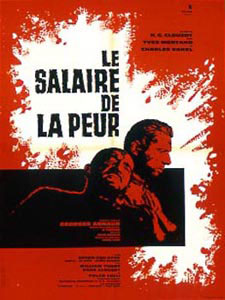
The Wages of Fear is a 1953 thriller film directed and co-written by Henri-Georges Clouzot, and starring Yves Montand, Charles Vanel, Peter van Eyck and Véra Clouzot. The film centres on a group of four down-on-their-luck European men who are hired by an American oil company to drive two trucks, loaded with nitroglycerin needed to extinguish an oil well fire, over mountain dirt roads. It is adapted from a 1950 French novel by Georges Arnaud.

Doom is a 2005 science fiction action horror film directed by Andrzej Bartkowiak. Loosely based on the video game series of the same name by id Software, the film stars Karl Urban, Rosamund Pike, Razaaq Adoti, and Dwayne Johnson. In the film, marines are sent on a rescue mission to a facility on Mars, where they encounter demon-like creatures.

Godzilla vs. Destoroyah is a 1995 Japanese kaiju film directed by Takao Okawara, with special effects by Kōichi Kawakita. Distributed by Toho and produced under their subsidiary Toho Pictures, it is the 22nd installment in the Godzilla franchise, and is the seventh and final film in the franchise's Heisei period. The film features the fictional monster characters Godzilla, Godzilla Junior and Destoroyah, and stars Takuro Tatsumi, Yōko Ishino, Yasufumi Hayashi, Sayaka Osawa, Megumi Odaka, Masahiro Takashima, Momoko Kōchi and Akira Nakao, with Kenpachiro Satsuma as Godzilla, Hurricane Ryu as Godzilla Junior, and Ryo Hariya as Destoroyah.

Godzilla: Tokyo S.O.S. is a 2003 Japanese kaiju film directed by Masaaki Tezuka, with special effects by Eiichi Asada. Distributed by Toho and produced under their subsidiary Toho Pictures, it is the 28th film in the Godzilla franchise, the fifth film in the franchise's Millennium series, the 27th Godzilla film produced by Toho, and a direct sequel to the 2002 film Godzilla Against Mechagodzilla. The film features the fictional monster characters Godzilla and Mothra, along with the mecha character Mechagodzilla, who is referred to in the film by the name Kiryu.
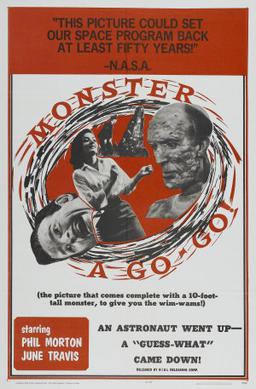
Monster a Go-Go! is a 1965 American science-fiction horror film directed by Bill Rebane and Herschell Gordon Lewis. The film is considered to be one of the worst films ever made.

Bill Rebane is an American film director, producer, and screenwriter. He is best known for low budget movies such as Monster a Go-Go and The Giant Spider Invasion. Rebane also ran for Governor of Wisconsin in 1979 and 2002 as the American Reform Party candidate.
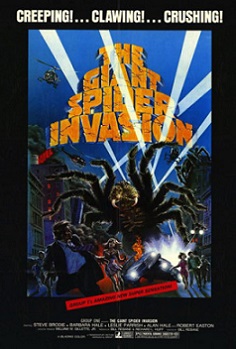
The Giant Spider Invasion is a 1975 American independent science fiction action horror film produced, composed and directed by Bill Rebane. Starring Steve Brodie, Barbara Hale, Robert Easton, Leslie Parrish, and Alan Hale, it follows giant spiders that terrorize the town of Merrill, Wisconsin and its surrounding area. The film was theatrically released in 1975 by Group 1 Films and enjoyed a considerable run to become one of the 50 top-grossing films of that year.

Motel Hell is a 1980 American comedy horror film directed by Kevin Connor and starring Rory Calhoun, Nancy Parsons, and Nina Axelrod. The plot follows farmer, butcher, motel manager, and meat entrepreneur Vincent Smith, who traps travelers and harvests them for his human sausages.

Frankenstein and the Monster From Hell is a 1974 British horror film, directed by Terence Fisher and produced by Hammer Film Productions. It stars Peter Cushing, Shane Briant and David Prowse. Filmed at Elstree Studios in 1972 but not released until 1974, it was the final chapter in the Hammer Frankenstein saga of films as well as director Fisher's last film.

Mysterious Island is a 1961 science fiction adventure film about prisoners in the American Civil War who escape in a balloon and then find themselves stranded on a remote island populated by giant animals.

Tartuffe is a German silent film produced by Erich Pommer for UFA and released in 1926. It was directed by F. W. Murnau, photographed by Karl Freund and written by Carl Mayer from Molière's original play. It was shot at the Tempelhof Studios in Berlin. Set design and costumes were by Robert Herlth and Walter Röhrig.
Bob Murawski is an American film editor. He was awarded the 2010 Academy Award for Best Film Editing for his work on The Hurt Locker, which he shared with his wife, fellow editor Chris Innis. He often works with film director Sam Raimi, having edited the Spider-Man trilogy, Oz the Great and Powerful, and Doctor Strange in the Multiverse of Madness. Murawski is an elected member of the American Cinema Editors, and is the co-founder of Grindhouse Releasing, an acclaimed film distribution company specializing in re-releases of cult films.
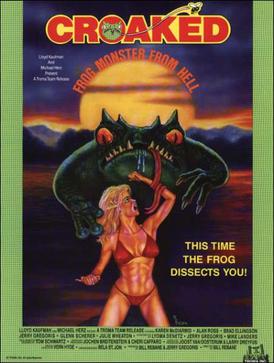
Croaked: Frog Monster from Hell is a 1981 American monster movie directed by Bill Rebane. The plot of Croaked involves a group of loggers terrorized by a vicious half-man/half-frog creature. The film was distributed by Troma Entertainment.
In the film industry, unsimulated sex is the presentation of sex scenes in which actors genuinely perform the depicted sex acts, rather than simulating them. Although it is ubiquitous in films intended as pornographic, it is very uncommon in other films. At one time in the United States, such scenes were restricted by law and self-imposed industry standards such as the Motion Picture Production Code. Films showing explicit sexual activity were confined to privately distributed underground films, such as stag films or "porn loops". In the 1960s, social attitudes about sex began to shift, and sexually explicit films were decriminalized in many countries.
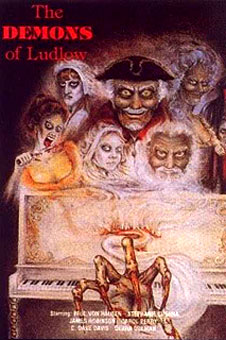
The Demons of Ludlow is a 1983 American horror film directed and produced by Bill Rebane. The plot revolves around murderous pilgrim demons that lurk inside an antique piano.

The Alpha Incident is a 1978 American science fiction horror film directed by Bill Rebane and starring Ralph Meeker, Stafford Morgan, John F. Goff, Carol Irene Newell, and George "Buck" Flower.

Sauna, also known as Filth or Evil Rising, is a 2008 Finnish horror film directed by Antti-Jussi Annila. The film was awarded three Jussi Awards in 2009: the best sound design, the best scenography and the best costumes. In addition, the film was nominated for best lead actor, best lead actor and best editing.

Paul Blaisdell was an American painter, sculptor and visual effects creator, best remembered for his work in science fiction and horror B movies of the 1950s.
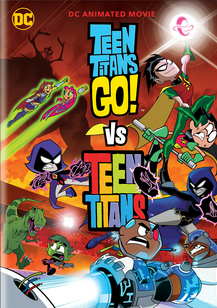
Teen Titans Go! vs. Teen Titans is a 2019 American animated direct-to-video superhero comedy film that serves as a crossover between the television series Teen Titans Go! and the original Teen Titans, both of which are adapted from the DC Comics superhero team of the same name. It is also the second film of both the Teen Titans Go! series and the regular Teen Titans series, after both Teen Titans Go! To the Movies (2018) and Teen Titans: Trouble in Tokyo (2006). The film premiered at Comic-Con on July 21, 2019, followed by a digital release on September 24, then followed by a DVD and Blu-ray release on October 15. The events of the film take place during the fifth season of Teen Titans Go! and after the finale of the fifth season of Teen Titans. The film premiered on television on Cartoon Network on February 17, 2020.
References
- ↑ "WEIRD WISCONSIN: The Bill Rebane Collection – 6-Film Set Available on Blu-ray From Arrow Video May 25th". We Are Movie Geeks. 2021-04-13. Retrieved 2024-09-28.
- ↑ "Bill Rebane filmed The Giant Spider Invasion movie in Merrill a few decades ago".
- 1 2 "They (1974)". 26 April 2021.
- ↑ "Rewind @ www.dvdcompare.net - Invasion from Inner Earth AKA The Selected AKA Hell Fire AKA They (Blu-ray) (1974)". www.dvdcompare.net. Retrieved 2024-09-28.
- ↑ Invasion from Inner Earth Blu-ray (They / Hell Fire) . Retrieved 2024-09-28– via www.blu-ray.com.
- ↑ "WEIRD WISCONSIN: THE BILL REBANE COLLECTION Blu-ray Review".
- ↑ Stanley, J. (2000) Creature Feature : 3rd Edition
- ↑ "DoBlu.com – 4K UHD & Blu-ray Reviews | Invasion from Inner Earth Blu-ray Review". www.doblu.com. 2021-04-22. Retrieved 2024-09-28.